Zalman HD-160 and Accompanying Products
by Joshua Buss on March 31, 2006 12:05 AM EST- Posted in
- Cases/Cooling/PSUs
HD-160 Case - Interior (cont'd)
To take a closer look at the HD-160, we removed components and examined them individually. First, here's a picture of the multi-card reader/port pieces, which (thankfully) uses standard USB connections and is mounted sturdily by several bolts.
The cage itself that was removed to get this picture is pretty standard, which like many other HTPC cases has to be completely removed to install drives, unfortunately. One nice feature is the use of soft rubber grommets to absorb vibrations from the installed hard drive on top.
The new Zalman case's method of stealthing the optical drive is to replace the drive tray's bezel with an included black aluminum piece, and while the fit is pretty good and the end result can be great looking, the double-sided adhesive tape doesn't always guarantee a perfect mount and could be problematic if not attached perfectly the first time.
With the top of the other hard drive mounting unit removed, we can see how these drives are held in place.
The six visible metal pins serve to anchor one side of the drive, while foam pads still get the majority of the pressure from the mount to help control noise. The top of the cage uses the same grommets mentioned before, and after the drive is bolted to the top piece, the entire unit simply screws down at the four slightly recessed corners that are visible here. Besides the somewhat tricky task of lining up the two screws on the front side of the cage (we found the use of a magnetic screwdriver imperative), the installation is on par with other HTPC designs, and ultimately, the slight difficulty of installation is offset by the low operating noise and good cooling performance of the design.
The installation of the power supply is quite similar to other designs that we've looked at before, with a separate plate first attaching to the supply, which then screws into the case. The plate itself is symmetrical with respect to the case's mounting points, so any compatible power supply can be turned either direction in the HD-160.
Something rather interesting about the installation instructions of the HD-160 is the fact that they suggest a different orientation of their own power supply, the ZM460-APS, than they suggest for other supplies. The instructions have the supply's large intake fan oriented towards the side vents, most likely due to the fact that often the ZM460-APS is able to keep its fan still or barely rotating, and if it was pointed towards the inside of the chassis, warm air could be drawn through the supply into the case.
One more soft pad is used again to help dampen possible vibrations, this time from the fan in the power supply. Also worth mentioning is that the whole power supply unit area is nice and spacious, and should work fine even with larger units.
Before getting to the details of the rest of the installation process, it should be noted that Zalman includes a versatile molex adapter with the case that allows the user to run the two rear exhaust fans at either 5v or 12v, depending on the desired cooling performance/noise level. Little inclusions like this are certainly welcome additions to any higher-end chassis; it's always nice to have options.
To take a closer look at the HD-160, we removed components and examined them individually. First, here's a picture of the multi-card reader/port pieces, which (thankfully) uses standard USB connections and is mounted sturdily by several bolts.
The cage itself that was removed to get this picture is pretty standard, which like many other HTPC cases has to be completely removed to install drives, unfortunately. One nice feature is the use of soft rubber grommets to absorb vibrations from the installed hard drive on top.
The new Zalman case's method of stealthing the optical drive is to replace the drive tray's bezel with an included black aluminum piece, and while the fit is pretty good and the end result can be great looking, the double-sided adhesive tape doesn't always guarantee a perfect mount and could be problematic if not attached perfectly the first time.
With the top of the other hard drive mounting unit removed, we can see how these drives are held in place.
The six visible metal pins serve to anchor one side of the drive, while foam pads still get the majority of the pressure from the mount to help control noise. The top of the cage uses the same grommets mentioned before, and after the drive is bolted to the top piece, the entire unit simply screws down at the four slightly recessed corners that are visible here. Besides the somewhat tricky task of lining up the two screws on the front side of the cage (we found the use of a magnetic screwdriver imperative), the installation is on par with other HTPC designs, and ultimately, the slight difficulty of installation is offset by the low operating noise and good cooling performance of the design.
The installation of the power supply is quite similar to other designs that we've looked at before, with a separate plate first attaching to the supply, which then screws into the case. The plate itself is symmetrical with respect to the case's mounting points, so any compatible power supply can be turned either direction in the HD-160.
Something rather interesting about the installation instructions of the HD-160 is the fact that they suggest a different orientation of their own power supply, the ZM460-APS, than they suggest for other supplies. The instructions have the supply's large intake fan oriented towards the side vents, most likely due to the fact that often the ZM460-APS is able to keep its fan still or barely rotating, and if it was pointed towards the inside of the chassis, warm air could be drawn through the supply into the case.
One more soft pad is used again to help dampen possible vibrations, this time from the fan in the power supply. Also worth mentioning is that the whole power supply unit area is nice and spacious, and should work fine even with larger units.
Before getting to the details of the rest of the installation process, it should be noted that Zalman includes a versatile molex adapter with the case that allows the user to run the two rear exhaust fans at either 5v or 12v, depending on the desired cooling performance/noise level. Little inclusions like this are certainly welcome additions to any higher-end chassis; it's always nice to have options.
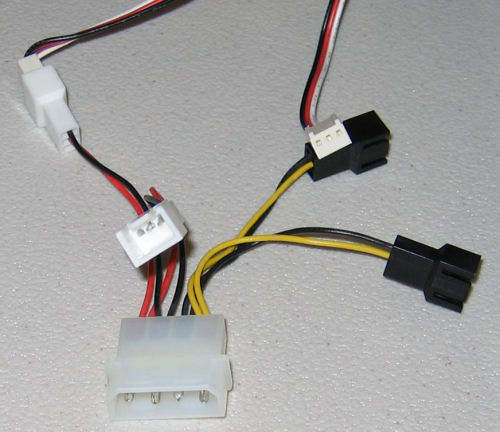


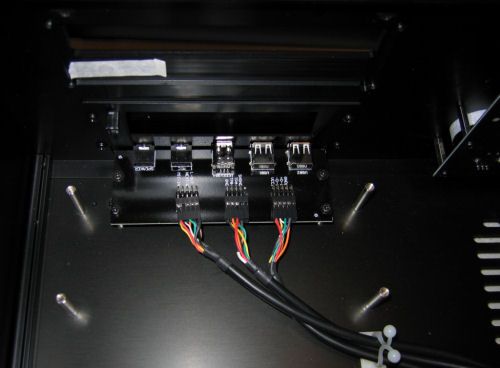
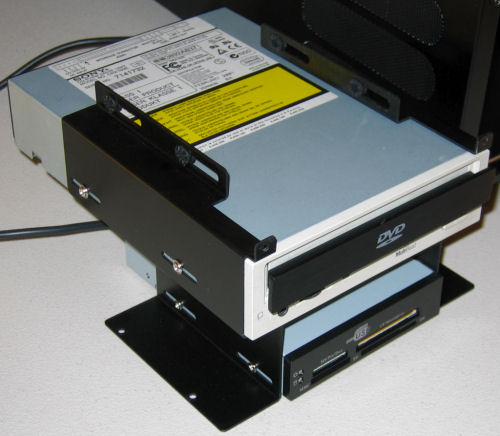
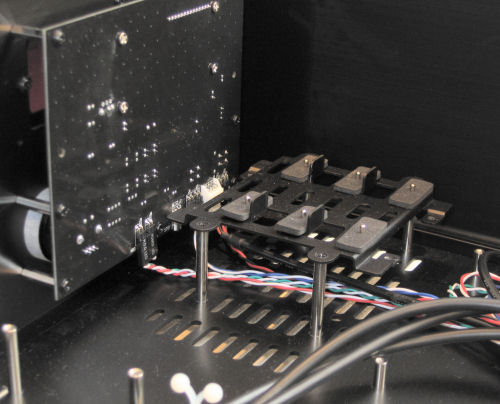
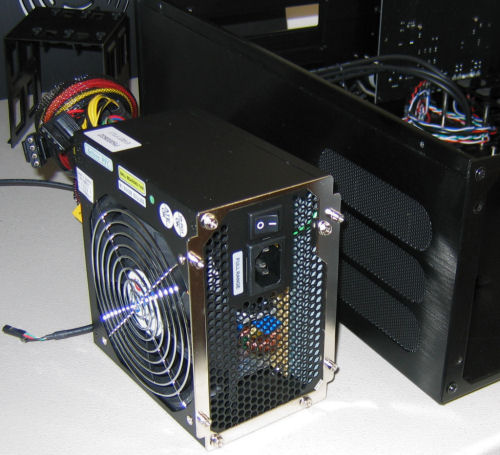
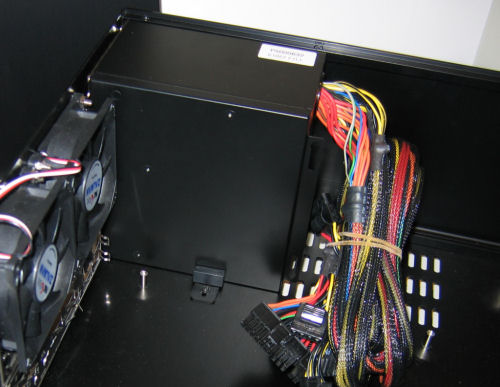








48 Comments
View All Comments
SonicIce - Saturday, April 1, 2006 - link
yeah i was just joking around man. you did a good job reviewing it the way you did.JoshuaBuss - Monday, April 3, 2006 - link
Thanks man, I never am sure on these little 'comments' sections.. I tend to get a lot of crap here.. haha.I kinda guessed that you were joking actually, but wanted to take the time to clarify why exactly I cable it the way I do anyway. I suppose for a lot of people, they might've read your post and NOT thought it was meant in jest.
4AcesIII - Friday, March 31, 2006 - link
Thermaltake's Mozart and Bach cases have that thing beat hands down at less money. And why not tell us that the vfd and remote are farmed out to Imon by Soundgraph? Anyone notice how the vid cooler eliminates use of slot next to video? If you're going to do that why not get something that puts the hot air out the back like some other after market vid coolers do? This is nothing other than a big black box with alot of stuff bought from others to put into and with it and not especially attractive either but that sorta follows Zalman's history in my opinion. Go ahead and buy it if you want a Yugo get something else if you want quality.segagenesis - Friday, March 31, 2006 - link
I think this is the HTPC case I've been waiting for. Screw how big it is... I want as quiet as possible.topher42 - Saturday, April 1, 2006 - link
Take a look at the OrigenAE X11.ScarletGrayFire - Friday, March 31, 2006 - link
It's about time we have an HTPC case capable of quietly cooling a high-performance HTPC! This case fits right in the audio rack, and with three 80mm fan locations and enough room for a quiet CPU HSF, one can run an Athlon FX CPU with a state of the art video card. Also, an Arctic cooling vga cooler will push some of the heat in the PCI card area out the back of the case. Word is that this case is actually manufactured by OrigenAE.mbhame - Friday, March 31, 2006 - link
Those pictures are awful. What gives??JoshuaBuss - Friday, March 31, 2006 - link
care to elaborate? any particular pics? I thought most turned out very good actually..?Howard - Friday, March 31, 2006 - link
It's spelled "exemplary", and I only see 3 discrete copper heat pipes (re: Zalman 9500).JoshuaBuss - Friday, March 31, 2006 - link
Thank you. I don't know what I was thinking.. I knew it was three all along..heh.